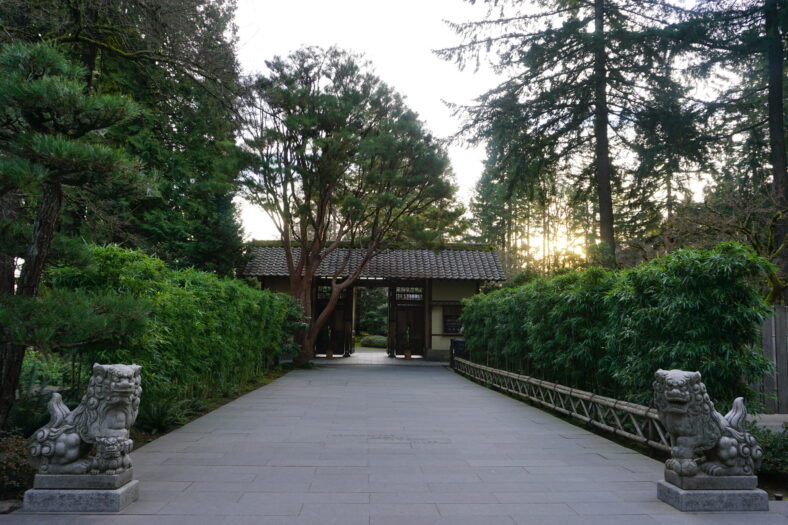
Because of the careful and diligent maintenance of its grounds by generations of gardeners, facilities technicians, volunteers, and more, Portland Japanese Garden appears as though it has been perched atop the West Hills for as long as Washington Park has existed. It may be surprising to know that the site it sits on today was once the old location of the Portland Zoo, now known as the Oregon Zoo.
The Portland Zoo was founded in 1888 after local pharmacist Richard Knight gifted an animal from his personal collection to the city. Starting with one grizzly bear, the zoo in its original location at 24th Place and Burnside expanded to a collection of 300 creatures by 1894. In 1925, the Zoo climbed up the hill to where Portland Japanese Garden now resides.
The move to this particular Washington Park location would only last for three decades, however, as the site became increasingly untenable for a zoo. As local conservationist Irene Finley wrote in 1945, “There are a number of suitable locations in Portland to erect such a zoological park. Our present site is NOT one of these since it receives little sunlight and does not allow for expansion.” In 1954, a nearly $4 million bond was approved by voters for a new site and on July 3, 1959, the newly christened Portland Zoological Gardens opened on the site of a former golf course, where it remains to this day as the Oregon Zoo:
1959 would be an auspicious year for Portland attractions. Then Mayor Terry Schrunk, started more seriously pursuing the construction of a Japanese garden as part of their efforts to reestablish social and economic ties with Japan. With the zoo opened in its new location, the now vacated property emerged almost immediately as the preferred site for what would become Portland Japanese Garden. Businessman Don Bates, an early proponent of the Garden, had premonitions of Portland Japanese Garden’s spectacular views come to mind. “Traditional buildings and the Japanese mastery of the miniature garden vistas presented in this spot a magnificent opportunity for Portland’s citizens,” he wrote.
By 1960, the Garden’s location was all but decided upon and in 1961 it was made official when the city of Portland agreed to a 99-year lease of the old zoo’s site. Now began the hard work of transforming the landscape, including all the former homes of the animals.
How the Spaces Transformed
Flat Garden
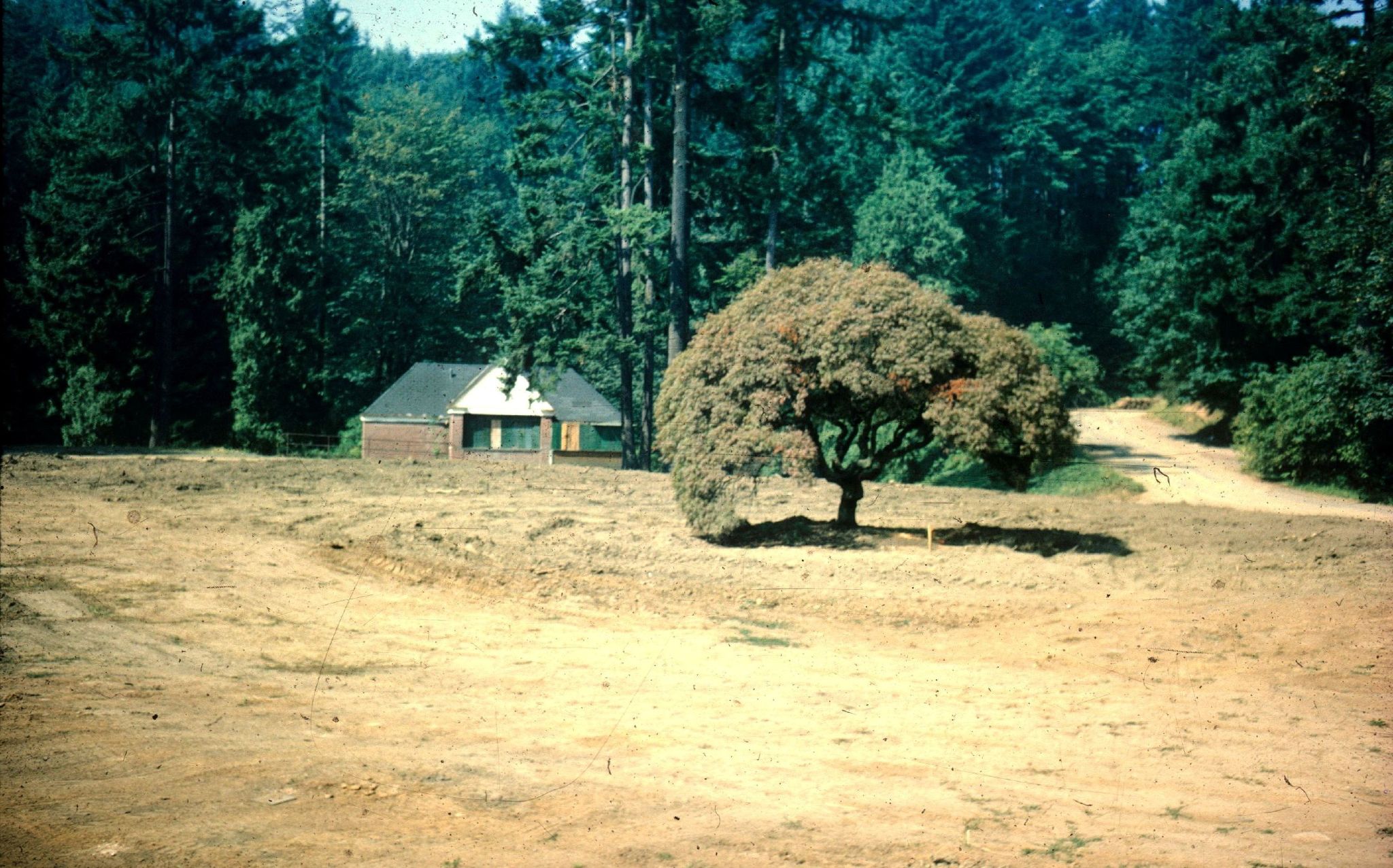

In 1962, a few months before Portland Japanese Garden was officially formed as an organization in 1963 (under the name of the Japanese Garden Society of Oregon), City Commissioner Ormond Bean supervised the removal of four feet of soil next to the location of an old primate house. It would be here that the Flat Garden would be built.
Tea Garden
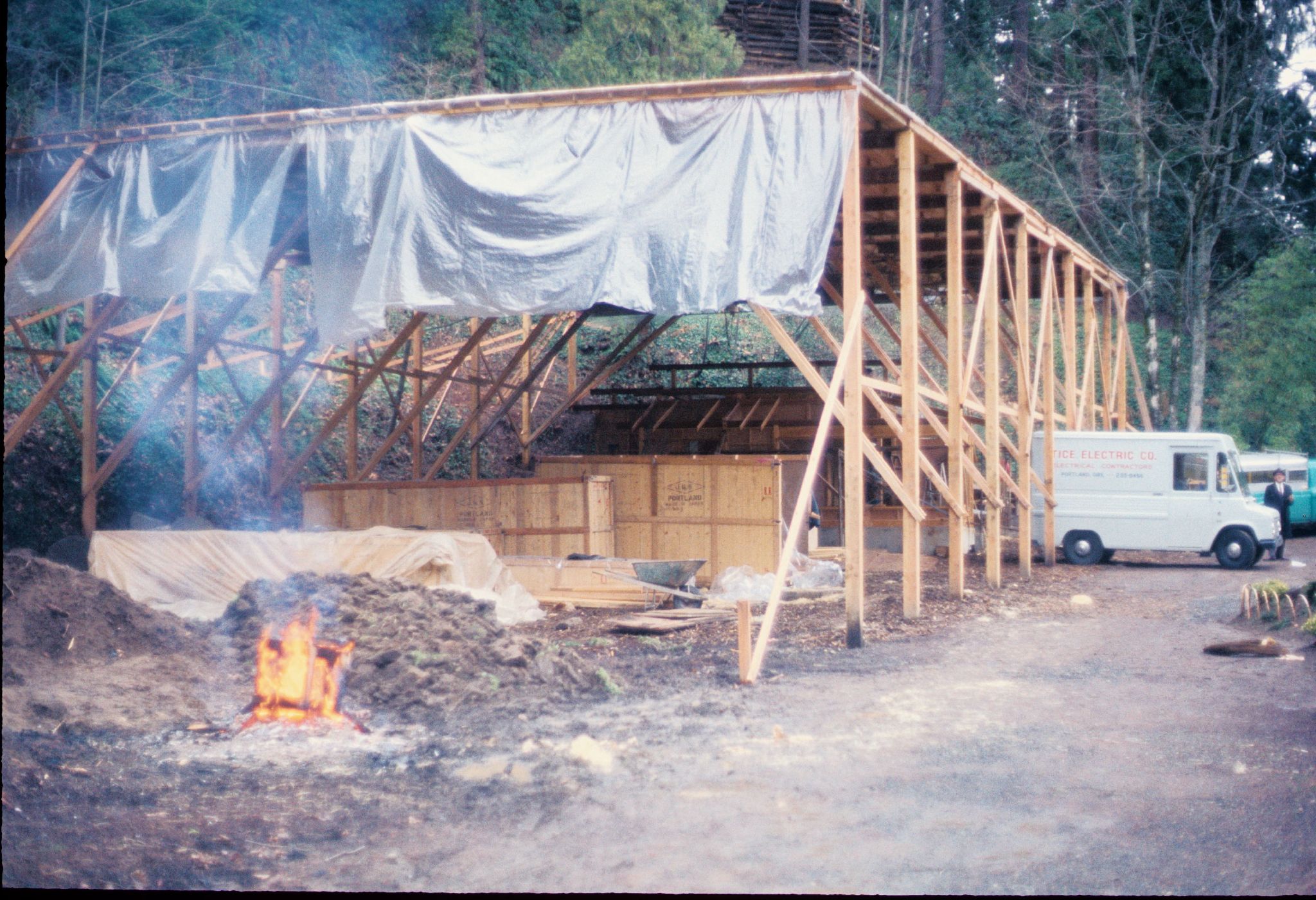

While coyotes can be spotted throughout Washington Park, they were once a feature of the Portland Zoo and were kept in what today is our Tea Garden. Now sitting where the coyote pens once stood is the Kashintei Tea House, a staple of this lush green corner of the Garden since it was installed in 1968.
Strolling Pond Garden, Upper Pond
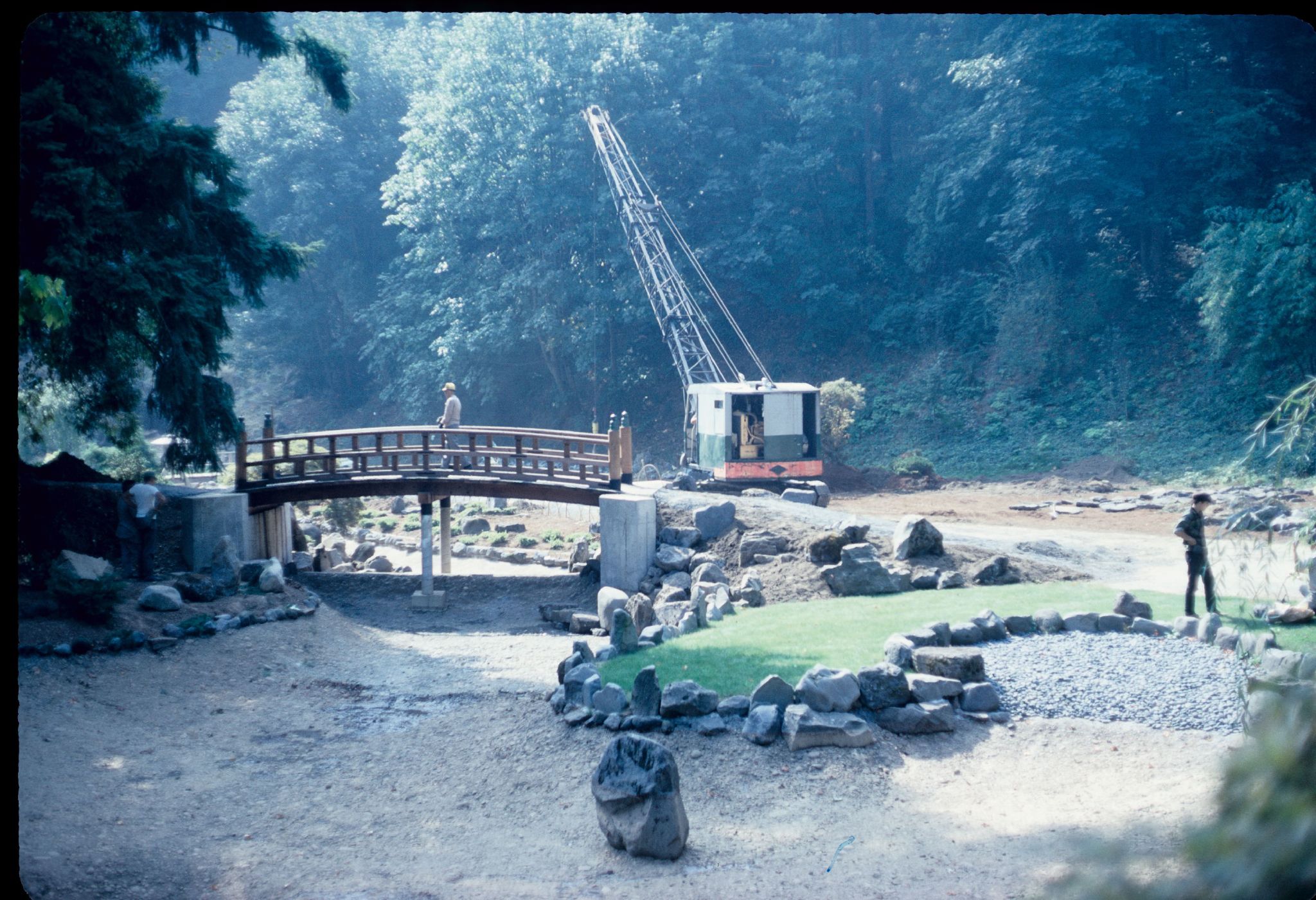

The upper pond of the Strolling Pond Garden may appear to be a naturally occurring body of water, but in fact it was redesigned after being home to the Zoo’s aviary. Today, the only birds that permanently reside here are two bronze cranes, gifts from the Bank of Tokyo, and a family of ducks that occasionally hang out and say hello to visitors.
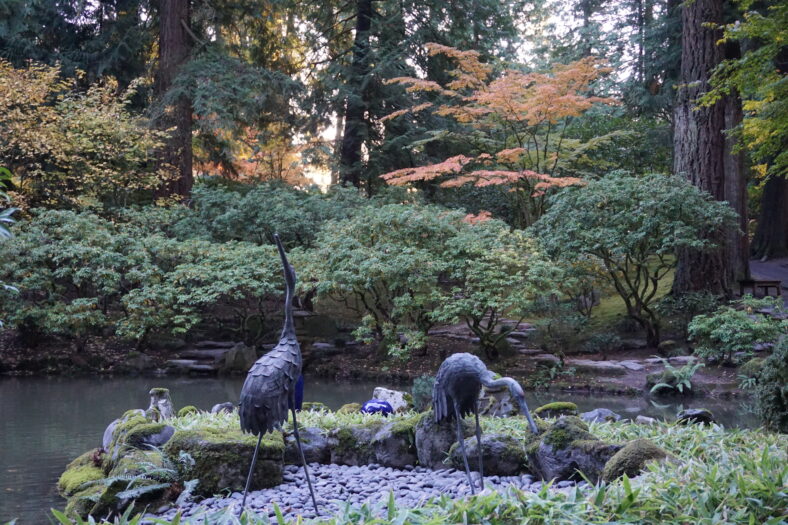
Heavenly Falls


Finally, perhaps the greatest transformation in the entire Garden was that of the Strolling Pond Garden’s lower pond where our beloved Heavenly Falls are located. Just a few decades too late to enjoy the koi who swim there today, bears were once kept here. The pond itself was once a bear grotto and the Heavenly Falls are in a hillside that once held the bear’s winter hibernating den. In a nod to this former ursine habitat, seven stones are embedded in the walk beside the pond. They form the Big Dipper, Ursa Major.
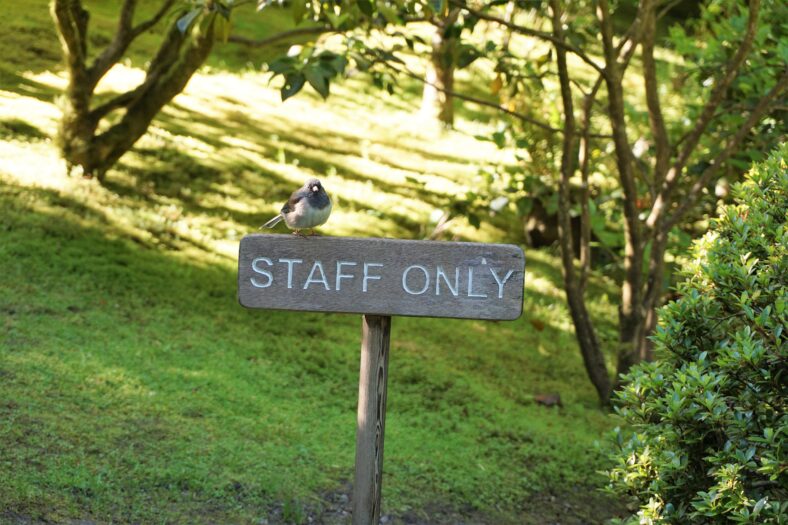
Animals Today
There are still some animals yet that are cared for in Portland Japanese Garden—our beautiful koi that grace the waters of the Strolling Pond Garden in brilliant flashes of orange, gold, silver, white, and black. Beyond them, the only animals that patrol the grounds are wild ones. Several birds including robins and juncos can be seen enjoying the mossy grounds or even perched on our signs. One may also see squirrels, slugs, and even frogs every now and then. The presence of animals is also symbolized throughout the Garden, such as the Wet Heron Lantern in the Flat Garden or the mythical koma inu that sit ahead of the Nezu Gate.

When Portlanders banded together to create Portland Japanese Garden, the grounds here were barren and scoured. It was a site so scarred that William “Robbie” Robinson, head gardener with Portland’s parks and recreation, and a person who devoted countless hours to the Garden for six decades, initially thought the idea of transforming it was “hopeless.” Today, Portland Japanese Garden stands as a testament to how a community together with nature can transform even the bleakest environs into something wonderful.
